Tiles are a great flooring choice for your home, thanks to their durability, huge variety of designs, and low maintenance. Besides choosing your tiles based on their design, selecting the right tile for the space they are going to be used in is also crucial. If you choose the wrong tile, it’s a mistake that can’t be easily rectified! But selecting tiles is easy if you know the basics. We spoke to the experts to get some tile selection tips to make your decision so much easier.
1. Look Out for Slip Resistance
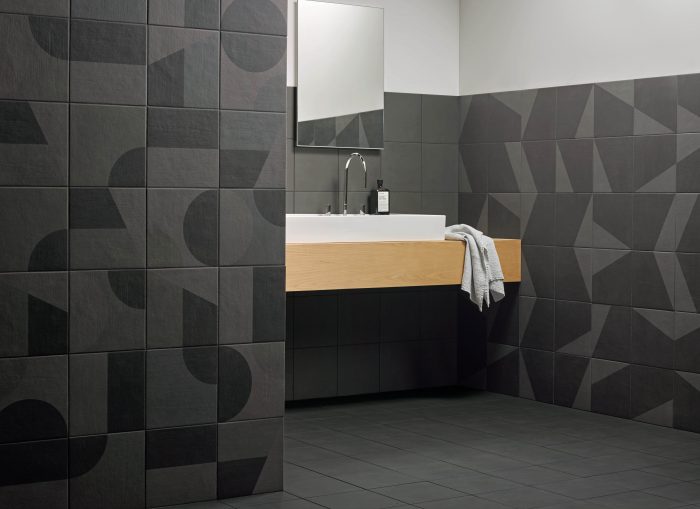
This Mutina Puzzle tile comes with a high slip resistance of R10.
All tiles are assigned a number, which indicates its slip resistance, and this is important to make sure you minimise the risk of accidents at homes, especially in bathrooms. The slip resistance scale ranges from R9 to R12; 9 refers to tiles with matte and slightly textured surfaces and 12 for tiles that have a very rough surface. Generally, R9 tiles would be ideal for most parts of the home, and R9 and above is suggested for bathrooms. R11 tiles can be specified for outdoor areas. Do keep in mind though, that the rougher the surface (i.e. the higher the slip resistance), the harder it would be to clean the flooring.
2. Tile Matching Made Easy
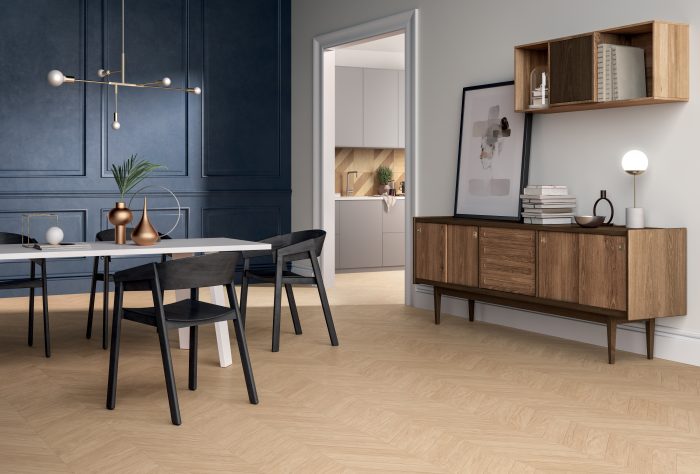
The uninterrupted flow of Ceramica Panaria Chic Wood tiles in this home makes it appear more spacious.
As tiles come in different finishes, they’re great for creating a seamless look in an open-concept space, such as a living-dining-kitchen area which flows into a balcony area. The same tile design (with different finishes) can be used across all of the spaces to ensure safety in each zone without cutting up the flooring visually. Not only will your interiors look larger, you no longer have to tear your hair out trying to find different tiles or flooring that match each other!
3. The Size of Tiles Matters
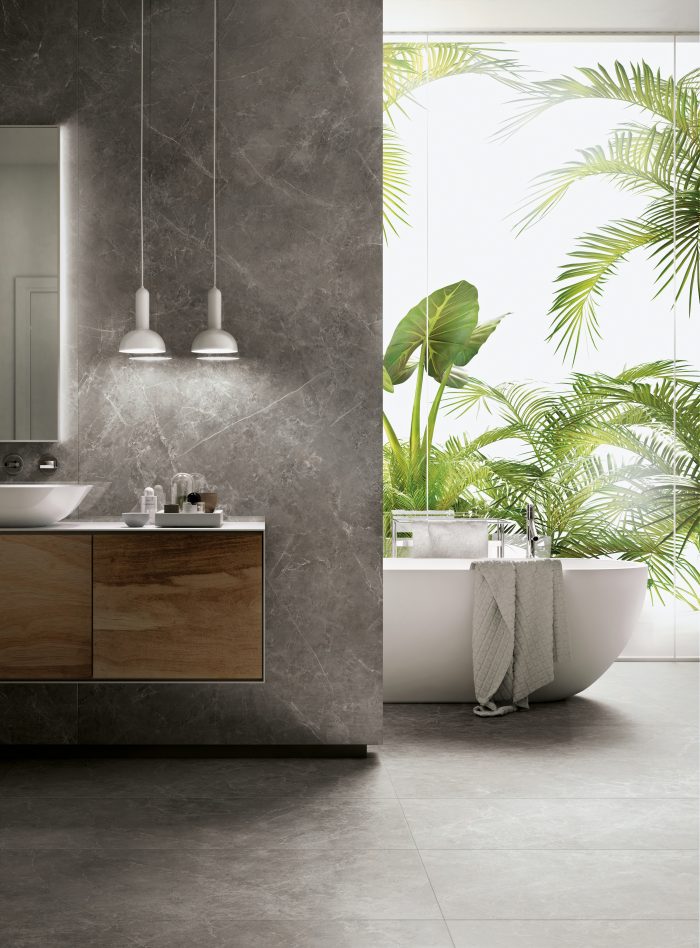
The Ceramica Panaria Trilogy range boasts of tiles that go up to 300cm by 100cm in size, which is also ideal for bathrooms.
Size does matter when it comes to tiles, and it matters because the tile size affects the visual perception of a space. Using larger tiles for flooring makes a space look bigger as there are less joint lines, and vice-versa. Having less joint lines make for easier maintenance as well. Slim tiles, which come in massive sizes of up to 300cm by 100cm, make it possible to have almost no joint lines on the walls or floor of a small bathroom. This results in seamless walls and floors that look great and are a dream to clean. The floor tile can also be designed to facilitate water drainage, without the need for smaller-sized tiles, by tilting it at an angle.
4. Tile Variation and Batch Variation
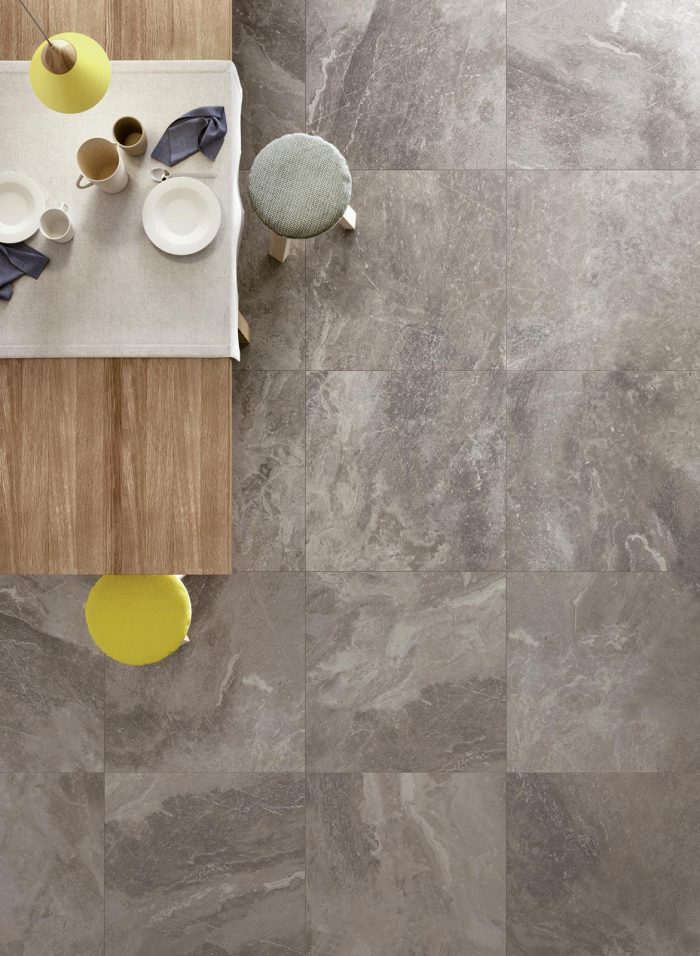
The high variation (V4) of the Ragno Bistrot Crux Taupe tiles gives each one unpredictably unique patterns.
Tiles come with a code that tells you how variable the design is on the tile. The scale runs from V1 to V4, with V1 for tiles with almost no variation (such as solid colour tiles), and V4 for tiles with the most variation. If you want your surface to look neutral and evenly patterned, choose V1 tiles. But if you like your marble veins or wood grains dramatic and bold, then V4 marble-inspired- and timber-inspired tiles are your choice.
Batch variation, on the other hand, refers to the variation between tiles made in different production batches. Each batch of tiles is bound to have slight differences in colour tonality and pattern, as they are made at different times. That’s why RICE recommends homeowners to keep some extra tiles, which are left over after the installation, aside just in case replacements are needed in the future. This is because even if you order the same tile again, the later batch might have some slight variations to the earlier one.
5. Laying Pattern Knowhow
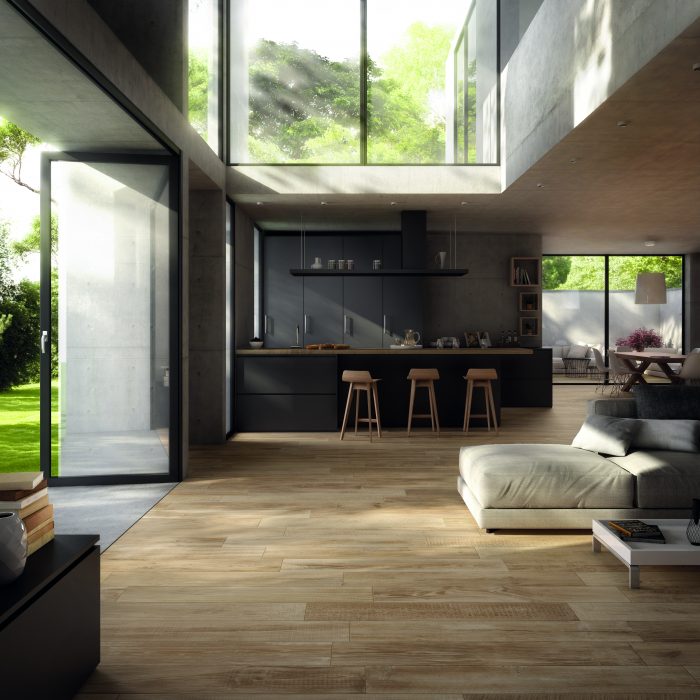
The long and slim timber-inspired Ceremica Panaria Crosswood tiles are laid with very little overlap to ensure the flooring looks as even as possible.
You know how bricks are always laid with a 50% overlap over the next brick for stability? You might want to replicate the same look for your surfaces, but it might surprise you to know that it is not recommended to do the same with long rectangular tiles. To the naked eye, the height of a tile looks even throughout, but the highest points of each tile are actually along its edges while the lowest point is in the middle. Due to the tile manufacturing process, a certain but very minute degree of “sagging” is inherent in all tiles. Laying long tiles in a bricklaying pattern accentuates this difference in height, as the lowest point of the tile is set against the highest point of the next. This might make your tiled floor or wall look and feel uneven. To avoid this, RICE suggests not overlapping long tiles by more than 25% of its length, or placing them edge-to-edge.
6. Porcelain vs Ceramic Tiles
Know your tile types. Porcelain tiles (also called homogenous tiles), are hardier as they’re fired at higher temperatures, which make the pores of the tiles tighter. This makes them great for high-traffic areas. Ceramic tiles, on the other hand, are more decorative and suitable for low traffic areas.
7. Know Your Eco Labels
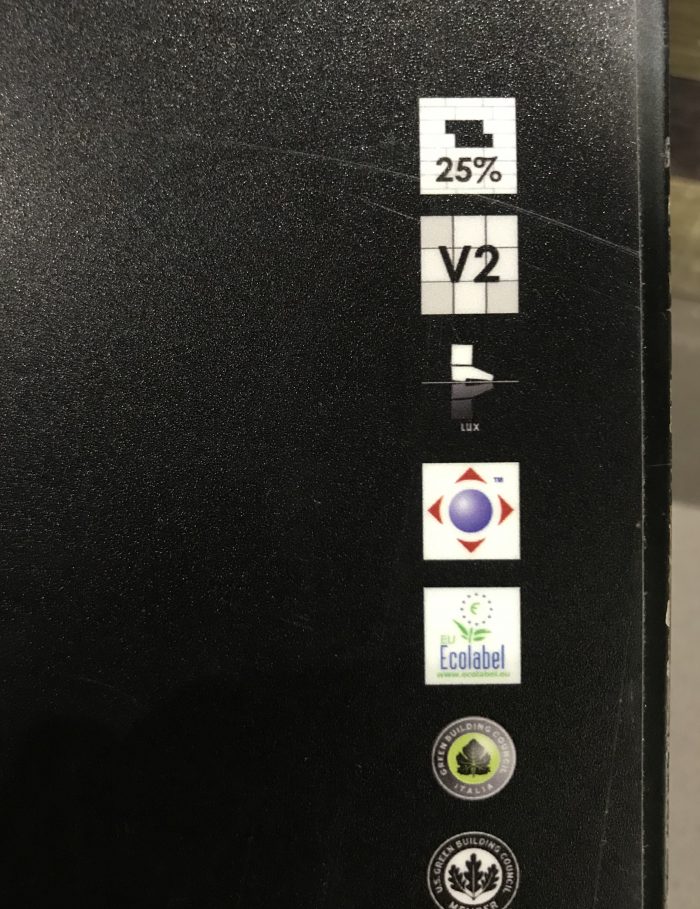
The back of each tile sample seen at riceLAB displays a wealth of information. This includes eco labels like the EU Ecolabel, and the logos of the Green Building Council Italia, and the U.S. Green Building Council, as seen here.
We encourage everyone to look out for Eco Labels when they choose their tiles – not only does it mean the manufacturing process was less harmful to the environment, it could mean there is less hazardous substances in the tile itself, which is better for your family too! For example, the EU Ecolabel takes the whole product life cycle into account in its list of stringent criteria – from the extraction of the raw materials, to production, packaging and transport, right through to your use and then your recycling bin. A product with this label minimises the use of hazardous substances and substances that may be harmful to the aquatic environment. Other eco stamps of approval include that of the Green Building Council Italia, the U.S. Green Building Council, and LEED certification.
8. Tiles with Anti-bacterial Protection
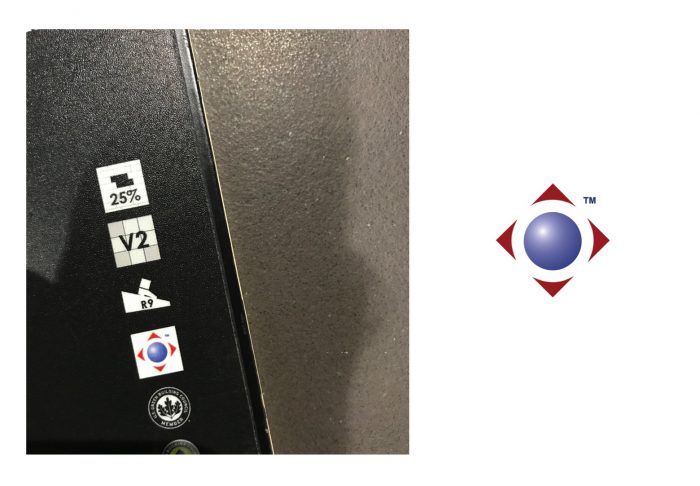
This tile comes with Microban, as seen by the Microban label on the back of the tile.
It’s good to know that there are tiles that come with Microban, a proprietary technology that prevents microbes from staying and growing on surfaces such as tiles. Microbes degrade building materials, so Microban extends the life of a product, keeps the material cleaner, with odour control to boot! At RICE, tiles that come with Microban are indicated with a Microban logo at the back of the sample.
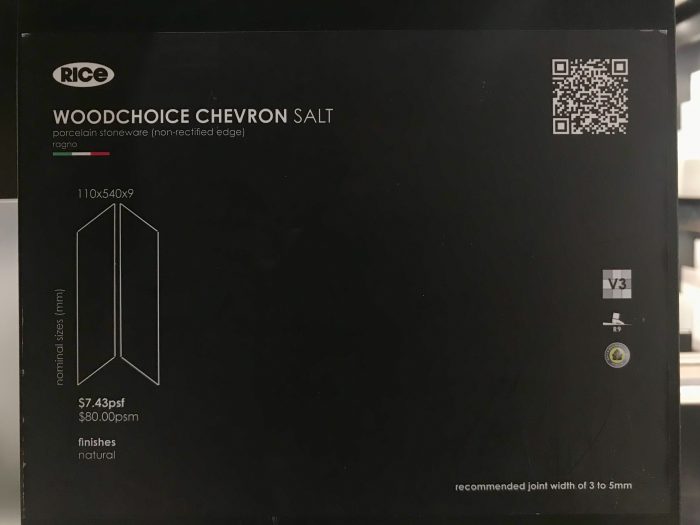
Now, take this newfound knowledge to empower your tile selection process. You’ll be able to read the codes found on every tile sample in MATERIAL LAB on the third floor of riceLAB (pictured above). They give you a wealth of information, including slip resistance, tile variation, available sizes, prices, eco-labels, and even suggested percentage of overlap, and joint width.
Apply what you’ve learnt to your tile selection process and explore the tiles available at riceLAB. Make an appointment to visit by emailing them here or by calling 6692 1199. riceLAB is at 213 Henderson Road 01.03 Singapore 159553. They are open from Mondays to Fridays 10am to 7pm, and Saturdays from 10am to 6pm.
Latest Post
Slither into the New Year with Harmony & Sophistication, along with PANTONE Colour 2025 - Mocha Mousse
Don’t miss these 3 RICE Tile Collections that best depict these Interior Designers’ Design Aesthetics
5 Local Renovation Projects that RICE Proudly Calls & Goes ‘Home’ to





